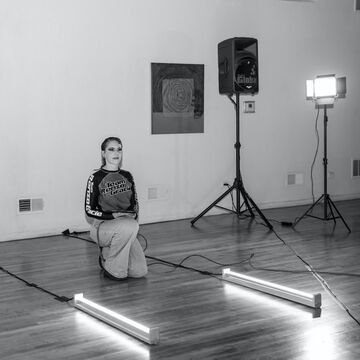

Odette Stout
Lecturer
Contact
Bio
Odette Stout (they/them) (b. 1991, Indianapolis, USA) is a reality artist and drag performer whose experimental costumes are a staple in Chicago underground nightlife. They stage intermedia performances that cast collaborating artists as otherworldly living artworks, called on to help tell stories from spaces where self-creation is a survival art practice. Stout’s runway and performance events synthesize fashion, digital installation, dance, drag and poetry and are designed to catalyze embodied experiences of the ever-present possibility of transformation. Their unique handmade silicone wearables, often augmented reality responsive, are lended out of their studio to local performers and artists. These wearables are documented through their many lives and uses as they gradually degrade and vanish into underground lore.
Stout holds a BFA (Printmaking) from Indiana University and MFA (Sculpture) from the School of the Art Institute of Chicago. Notable exhibitions include The Sculpture Center, Roots and Culture, Co-Prosperity, Ars Electronica , Kinsey Institute, Currents New Media, and Hyde Park Art Center. Partners in support include 3Arts, Chicago Artists Coalition, Chicago DCASE, and Southern Graphics Council International.